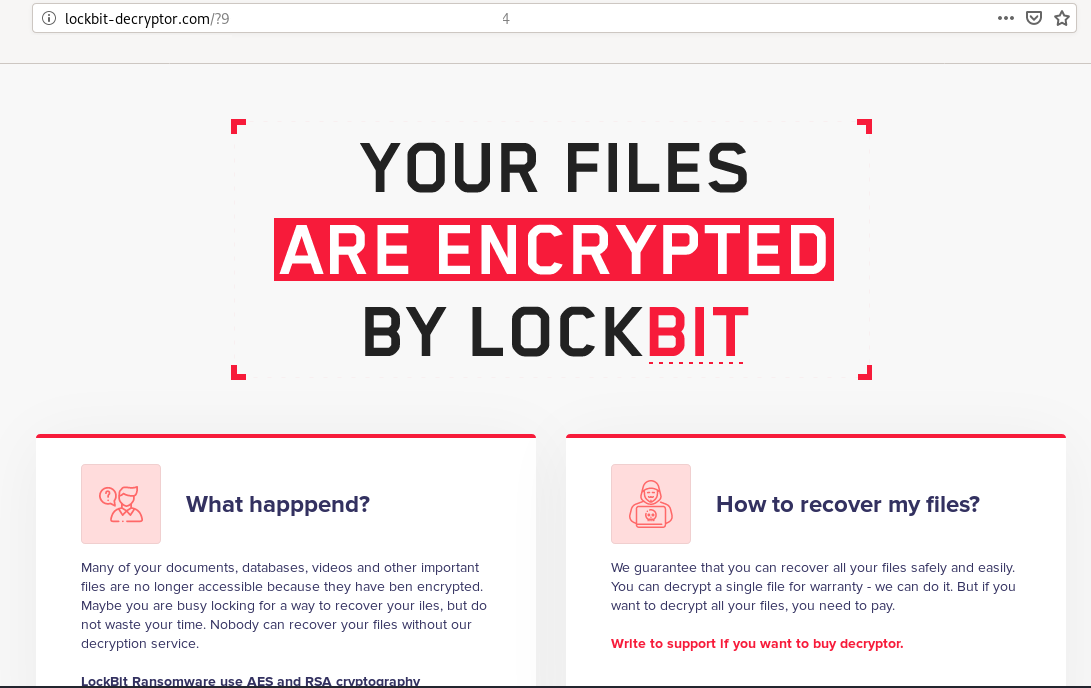LockBit ransomware has been making headlines in the cybersecurity world due to its evolving tactics and the increasing number of high-profile attacks. This malicious software is designed to encrypt files and demand a ransom from victims in exchange for the decryption key. In this blog post, we will delve into the workings of LockBit ransomware, explore its attack vectors, and provide guidance on how to protect your organization against this persistent threat.
Understanding LockBit Ransomware:
LockBit first emerged in 2019, but its developers continuously update and refine its code. The ransomware uses advanced encryption algorithms to lock files and append a unique file extension to each encrypted file. LockBit also leaves a ransom note containing payment instructions and threatens victims with permanent data loss if the ransom is not paid promptly.
Attack Vectors:
- Phishing Emails: LockBit ransomware often infiltrates organizations through phishing emails containing malicious attachments or links. Unsuspecting users may inadvertently download and execute the ransomware by opening these attachments or visiting compromised websites.
- Exploit Kits: LockBit can also be delivered via exploit kits, which take advantage of vulnerabilities in outdated software to install ransomware on victims’ systems.
- Remote Desktop Protocol (RDP) Attacks: Cybercriminals can use brute-force attacks to exploit weak RDP credentials, gain unauthorized access to a target network, and subsequently deploy LockBit ransomware.
Defending Against LockBit Ransomware:
- Regular Backups: Maintaining up-to-date backups of critical data is essential. In the event of a ransomware attack, having a backup enables you to restore your files without paying the ransom.
- Update and Patch: Keep your software and operating systems current with the latest updates and security patches to minimize the risk of exploitation through known vulnerabilities.
- Employee Education: Train your staff to recognize and avoid phishing emails and other social engineering tactics. Encourage them to report suspicious emails and not to click on unknown links or open unexpected attachments.
- Strengthen RDP Security: Secure your RDP connections by implementing strong and unique passwords, enabling two-factor authentication, and limiting remote access to trusted IP addresses.
- Antivirus and Firewall: Employ robust antivirus solutions and firewalls to detect and block malicious activity. Regularly update these security tools to protect against emerging threats.
Conclusion:
LockBit ransomware poses a significant threat to organizations across industries. Understanding its attack vectors and implementing robust defense strategies can help minimize the risk of falling victim to this tenacious malware. Stay vigilant, invest in cybersecurity best practices, and prioritize ongoing employee education to strengthen your organization’s overall security posture.
About 360 SOC
At 360 SOC, we understand that no two organizations have the same security needs and requirements. That’s why we offer both Managed Detection and Response (MDR) and Security Operations Center as a Service (SOC as a Service), tailored to meet your unique security requirements. Our team of experts will work with you to understand your organization’s specific security needs and goals, and design a customized solution that delivers the protection and support you need to stay safe from cyber threats. With 360 SOC, you can feel confident that your organization’s networks and systems are in good hands, and that you have the tools and resources you need to effectively detect and respond to any security incidents.






